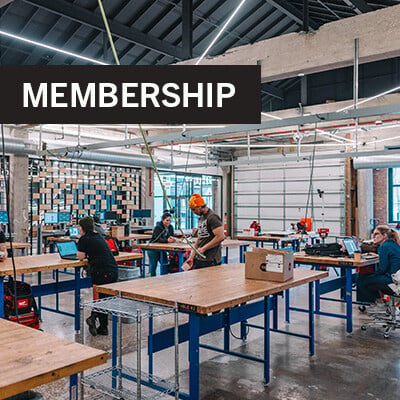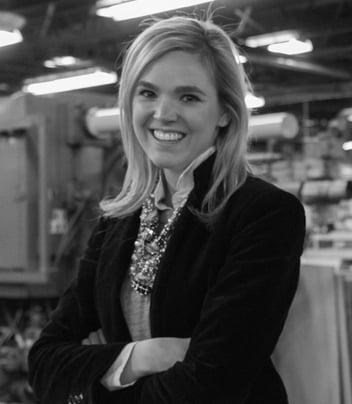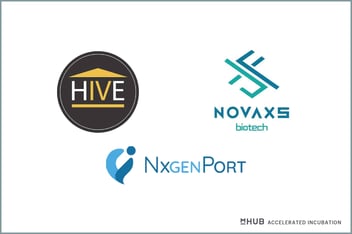In today’s innovation-driven economy, understanding intellectual property (IP) is critical for protecting your work and growing your business. In his workshop Patently Good Ideas™, Jacob M. Ward, registered patent attorney and Founding Member of Ward Law Office LLC, delivers a fast-paced, insightful breakdown of IP fundamentals, including trademarks, copyrights, trade secrets, and patents. Below are some of the key lessons—backed by direct quotes from Ward’s talk.

Trademarks: More Than a Name
When it comes to trademarks, creativity isn’t enough—they must function as source identifiers, not just catchy names. Jacob M. Ward, registered patent attorney and founding member of Ward Law Office LLC, emphasized that a trademark’s purpose is to distinguish the provider of a product or service—not to describe the product itself. Misuse can weaken a brand’s legal standing, and in the worst cases, lead to a complete loss of trademark rights.
Take aspirin, for example. Originally a trademark owned by Bayer, it became a generic term because the public began using it to refer to the product, not the brand.
“It kills the trademark,” Ward explained, “because it becomes a name for the thing itself and not the source identifier.”
This phenomenon is known as genericide, and even powerhouse brands like Google and Kleenex actively fight against it. Their advertising strategies often include carefully phrased taglines like “Kleenex® brand facial tissues”—a deliberate effort to reinforce trademark status and avoid dilution.
For startups and founders, Ward offered simple but crucial advice: always pair your trademark with the generic name of the product or service (e.g., “Jake’s™ Pizza”), and use it consistently to maintain its strength.

Copyrights: Protecting Creative Expression
Ward clarified that copyright doesn’t protect facts or ideas, but how they’re expressed:
“Copyright protects the expression of the idea, not the idea itself.”
Works that contain even a “modicum of creativity”—like books, photos, software, and even code—can be copyrighted. But contrary to popular belief, making minor edits to someone else’s work doesn’t shield you from legal consequences. Making minor changes to someone else’s work isn’t enough to avoid copyright infringement.
A well-known legal example illustrated this point: a newspaper that reprinted a single page from a 700-page book was found guilty of infringement, because the page contained the book’s most critical content, his advice?
“Internalize it. Make your own creative expression based on that internalization.”
Ward also explained the importance of statutory damages, available only to those who register their copyrights:
“You can go before that judge and say… I followed the law. So, Judge, I’m asking for anywhere from $750 up to $30,000 per work infringed.”
Trade Secrets: Keep It Secret, Keep It Safe
Unlike trademarks or patents, trade secrets don’t require government registration—but that doesn’t mean they’re easier to protect. To claim a trade secret legally, a business must actively safeguard the information, taking clear, reasonable steps to keep it confidential.
This could include proprietary formulas, algorithms, or unique processes—anything that gives a business an edge over competitors. A famous example is Coca-Cola’s recipe, which has been protected as a trade secret for over a century. The formula is kept under strict controls and split among departments so no single person knows it entirely.
But trade secret protection has its limits. If someone else independently discovers or reverse-engineers the same formula, they’re free to use it. That’s why companies need to be strategic: trade secrets are powerful, but only as strong as the walls built to protect them.
Patents: Fencing Off Your Invention
As a registered patent attorney, Ward stressed a critical misunderstanding:
“A patent does not give you the right to sell anything or to make anything… It’s a negative right.”
Instead, it gives you the right to prevent others from making, using, or selling your invention. To qualify for a patent, your invention must be:
-
New – “It has to be different in some way, shape or form.”
-
Useful – “If your invention does not work well, but it actually does work, it’s useful.”
-
Non-obvious – “Inventions are just solutions to problems… but to rise to the level of being patentable, they must meet additional legal thresholds.”
Most inventors start with a provisional patent to secure the term “patent pending” while testing the market.
“It gives you a year to sort of test the waters, develop your prototypes, work with your investors, start making sales…”
But don’t announce your idea too soon.
“In the United States… if you tell a third party about your invention… you start a clock ticking—one year within which to file your patent application or that invention is public domain.”

AI and Copyright: A Gray Area
Artificial Intelligence has become a creative tool across industries—but how does that translate to copyright protection? Jacob M. Ward addressed the legal uncertainty surrounding AI-generated content and what creators need to know.
“AI can’t own copyright… If all you have is a prompt, there’s probably not enough.”
Under current U.S. law, only works created by humans—or entities acting through human agents—can be copyrighted. This means that even if an AI tool produces something novel, the user may not automatically own the rights to that content unless there's sufficient human creativity involved.
“That prompt that I put in there probably does not rise to the level of me being the author.”
However, Ward offered a pathway forward for creators using generative tools:
“If I had taken that and… converted it to black and white… I probably have a copyright. I added creativity, human creativity.”
The key takeaway? Document everything. Whether adjusting an image’s tone, compositing outputs, or editing sequences generated by different models, your creative decisions can matter:
“Document what you’re doing… Maybe I said, ‘Alright, change these colors… make the robot cartoon styled.’”
But beware of relying too heavily on AI without understanding its limitations:
“It uses whatever the company used in their language learning model, whatever the previous artist work they used… The problem is those nodes don’t come from nowhere. Those nodes come from most likely, human creativity, other works, other copyrighted works.”
Ward cautioned that blindly using AI outputs could result in legal risk—especially if you commercialize the result without verifying its originality.
“You could be walking yourself into a copyright infringement.”
His advice for startups? “Be aware. It is a tool. Be aware of the limitations. Understand what it actually is doing.”
In short, human creativity still matters—and could be the deciding factor in whether your work is protected under copyright law.
Final Takeaways from Jacob M. Ward
Ward closed with this simple but powerful reminder: “Just because the invention is new to you doesn’t mean it’s legally new.”
And the most inspiring note of all:

Need more insights like this?
Consider joining the mHUB hardtech community of over 1,200 professionals on the road to commercializing physical product solutions. By joining mHUB you unlock prototyping labs and business amenities (located in Chicago), a robust curriculum from idea to manufacturing, a deep bench of mentors with expertise in everything from engineering to marketing, and limitless opportunities to connect with others on the same journey.
Learn more about mHUB membership here.
For more resources on building and scaling your business, check out upcoming mHUB courses and events at mhubchicago.com/eventsIf you are a budding entrepreneur looking for a vast community of innovators, take a tour at mHUB to learn more about the hardtech ecosystem and how you can get involved.




